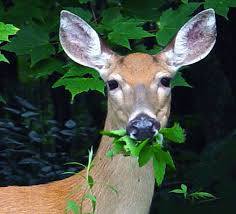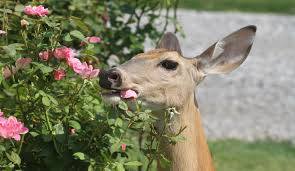Tonkdale Greenhouse
In my designing process along the Wasatch Mountains, front and backside communities, animals of all sorts like to dine on tress, shrubs, perennials and annuals. Trying to design around the deer, elk, moose, raccoons, rabbits and other critters is exceptionally challenging. I do try to select plant materials that are animal resistant, however, there are times when animals will eat just about anything.
In doing some research for a current client I came across a couple of good ideas for people to implement. The article is below and was written by Tonkadale Greenhouse.
Aside from planting deer-resistant plant varieties, here are a few other tips and tricks to help save your garden from unwanted pruning, mowing and munching.
- Deer are pattern eaters. Like us, they can get in a rut, and once they decide your yard is their favorite lunch truck, they’ll just keep coming back. Make sure they never discover the tasty nuggets your yard has to offer.
- Modify deer eating patterns and behavior early. Early in the season, string heavy gauge fishing line between posts about one and a half and three feet high. Be sure it’s tight and that the posts won’t fall over with a little pressure. Deer love to visit at dusk and dawn when visibility is hampered. Being nervous creatures by nature, they don’t like being touched by something they can’t see. The fishing line will not be visible, but it will hinder their movement. They may back away and try again, but they’ll soon find where they can and cannot walk.
- Apply repellents. There are plenty of scents deer dislike, and repellents use these scents to mask the delectable smells deer prefer. Repellents are just stinky stuff. They aren’t harmful or toxic to you or the environment. Repellents are sold in granular or liquid form, and are easy to apply. Begin applying repellents early in the season for maximum effect.
- Don’t get discouraged. Gardening is a verb. That means it is an ongoing activity that happens over time and space. Most plants tolerate being munched on a bit. They will grow out of it, and perennials will come back next year. Start small, think big, and plant plants!
As the article suggests there are times when you just cannot do without a specific plant.This is what I am facing on this current design. So I will be providing the above information to my client along with a plant list that is mostly resistant to deer, cross our fingers and hope these tricks work!.
Now you have some options as well for trying to protect these special plants. Many times the animal problems are localized so check with your neighbors to see what has been successful for them in protecting their landscapes.
Happy Planting!


